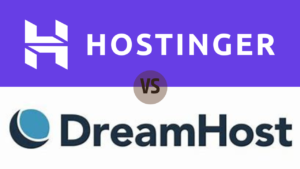In today’s hybrid work environment, having reliable video conferencing software is essential for maintaining communication and productivity. This article compares four leading options: Zoom, Microsoft Teams, Google Meet, and Webex, to help you choose the best video conferencing software for professional use.
Table of Contents
Overview of Each Product to determine best video conferencing software for professional use
Zoom
Zoom has become synonymous with video conferencing. It offers a user-friendly interface and a host of features tailored for professional use.
Microsoft Teams
Microsoft Teams is part of the Office 365 suite and provides seamless integration with other Microsoft applications, making it a strong contender for businesses already using Microsoft products.
Google Meet
Google Meet is a robust and reliable video conferencing tool integrated with Google’s ecosystem, ideal for users who rely heavily on Google Workspace.
Webex
Webex, developed by Cisco, is known for its high-quality video and comprehensive security features, making it suitable for both small businesses and large enterprises.
Detailed Comparison
Features
Zoom
- Video Quality: HD video and audio.
- Meeting Capacity: Up to 1,000 participants.
- Integrations: Slack, Salesforce, and more.
- Security: End-to-end encryption.
- Additional Features: Breakout rooms, virtual backgrounds.
Microsoft Teams
- Video Quality: HD video.
- Meeting Capacity: Up to 300 participants.
- Integrations: Office 365, Trello, and more.
- Security: Advanced compliance and security features.
- Additional Features: File sharing, team channels, chat.
Google Meet
- Video Quality: HD video.
- Meeting Capacity: Up to 250 participants.
- Integrations: Google Workspace.
- Security: Secure by design, with robust privacy controls.
- Additional Features: Real-time captions, low-light mode.
Webex
- Video Quality: High-definition video.
- Meeting Capacity: Up to 1,000 participants.
- Integrations: Salesforce, Microsoft Office, and more.
- Security: End-to-end encryption, compliance with industry standards.
- Additional Features: Webex Assistant, screen sharing, whiteboarding.
Pros and Cons
Zoom
- Pros: Easy to use, scalable, numerous features.
- Cons: Security concerns in the past, free plan limits.
Microsoft Teams
- Pros: Seamless integration with Microsoft products, robust team collaboration features.
- Cons: Can be complex for new users, less intuitive interface.
Google Meet
- Pros: Excellent integration with Google Workspace, simple interface.
- Cons: Fewer features compared to competitors, participant limits on free plan.
Webex
- Pros: Strong security, high-quality video, feature-rich.
- Cons: Higher cost, can be resource-intensive.
User Experience
Zoom
Zoom’s intuitive interface and ease of use make it a favorite among users. Its features like breakout rooms and virtual backgrounds enhance the user experience.

Microsoft Teams
Microsoft Teams offers a comprehensive suite of collaboration tools. Its integration with Office 365 allows for seamless file sharing and project management.

Google Meet
Google Meet provides a straightforward, no-frills interface that integrates seamlessly with Google Workspace. Its real-time captions and low-light mode are user-friendly features.

Webex
Webex’s interface is feature-rich but can be overwhelming for new users. Its high-quality video and security features are standout aspects.

Integrations
Zoom
Zoom integrates with a wide range of applications, including Slack, Salesforce, and HubSpot, enhancing its functionality and ease of use.
Microsoft Teams
Teams’ deep integration with Microsoft Office 365 makes it an ideal choice for businesses already using these tools. It also integrates with third-party apps like Trello and Asana.
Google Meet
Google Meet’s integration with Google Workspace ensures smooth collaboration for users who rely on Google’s suite of applications.
Webex
Webex offers integrations with various tools such as Salesforce and Microsoft Office, making it versatile for different business needs.
Pricing
Zoom
- Free Plan: 40-minute limit on group meetings.
- Pro Plan: $14.99/month/host.
- Business Plan: $19.99/month/host.
Microsoft Teams
- Free Plan: Limited features.
- Microsoft 365 Business Basic: $5/user/month.
- Microsoft 365 Business Standard: $12.50/user/month.
Google Meet
- Free Plan: Limited features.
- Google Workspace Essentials: $8/user/month.
- Google Workspace Enterprise: Custom pricing.
Webex
- Free Plan: Limited features.
- Starter Plan: $13.50/user/month.
- Business Plan: $26.95/user/month.
Use Cases
Zoom
- Best For: Large meetings, webinars, educational purposes.
Microsoft Teams
- Best For: Teams needing robust collaboration tools, businesses using Office 365.
Google Meet
- Best For: Simple and quick meetings, Google Workspace users.
Webex
- Best For: Businesses requiring high security and advanced features.
Final Verdict
Each of these video conferencing tools has its strengths, and the best choice depends on your specific needs.
- Zoom is ideal for those who need a scalable solution with advanced features.
- Microsoft Teams excels for businesses already using Microsoft products and needing integrated collaboration tools.
- Google Meet is perfect for users who prioritize simplicity and integration with Google Workspace.
- Webex stands out for its security and high-quality video, suitable for enterprises.
Call to Action
Try out these video conferencing tools to find the best video conferencing software for professional use. Click the links below to start your free trial or subscribe to a plan.
By choosing the best video conferencing software for professional use, you can enhance your communication and productivity, ensuring seamless collaboration in any work environment.





